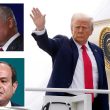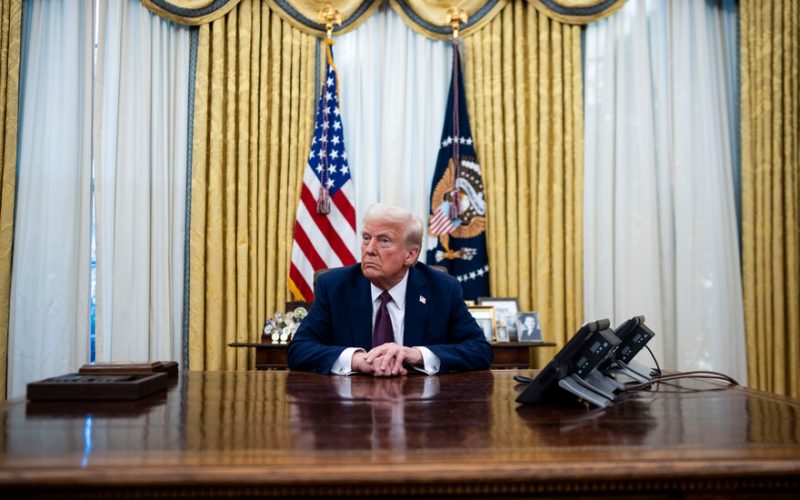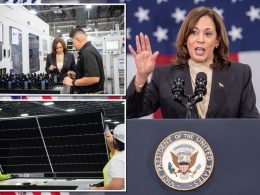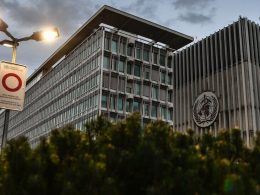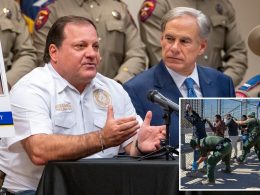During his Inaugural Address on Monday, President Trump made a point of telling the country that he had learned “a lot” over the past eight years.
The four and a half days since have revealed what he meant.
Gone are the Washington outsiders who took the reins of government in 2017 and struggled to get its wheels turning. Instead, we’ve seen a hailstorm of action that reflects how Trump’s advisers have become masters of the government bureaucracy they have promised to upend.
My colleague Charlie Savage has covered law, government and the way presidents use their power for more than two decades. He reported extensively on the first Trump administration as well as on Trump’s plans for his second, and I asked him to talk us through just how much is different this time around — and what that could mean for the presidency to come.
Our conversation was condensed and edited for clarity.
JB: You covered the first Trump administration, and now you’ve covered the first week of the second one. What was different in the opening days of Trump II, compared with Trump I?
CS: The opening of the first Trump administration was chaotic and dysfunctional. Trump had little support from the Republican establishment during the 2016 campaign. He and many of the officials he gathered around him when he took office simply did not know what they were doing at first — and it showed. Trump issued only four executive orders in his first five days in office in 2017. Even when the pace later picked up, many of his early directives were effectively press releases that did not do much of substance, or were so poorly developed that it was a no-brainer for courts to block them.
By contrast, the second Trump administration has begun with a blizzard of consequential executive orders. A few are vague nothing-burgers — like ordering the government to think about ways to reduce prices — but most are very substantive. Many of his policy changes will strike many people as extreme. Some, as I wrote this week, pushed at the limits of legitimate executive power and may not survive court challenges. One about ending birthright citizenship has already been blocked for now. But inarguably, Trump is moving much more quickly to achieve his goals.
This is partly because he and his advisers learned a lot about how government works over the course of his first term. And partly because, over the past eight years, Trumpism has become the conservative establishment, and policy think tanks in Washington are now aligned with and helping him — like Project 2025.
To be sure, things are still bumpy, but Trump’s advisers have been carefully planning out this takeover.
What, specifically, does it seem like Trump — or the people around him — have learned since 2017? Have they figured out how to be bureaucrats?
Here’s one example of how they are operating more shrewdly. One of the executive orders that got less attention this week was about foreign visitors to the United States. It has a section that requires the government to take two months to study vetting and screening procedures in countries around the world, and then to deliver a report identifying which are so deficient as to supposedly warrant banning entry to the United States by any citizens of those countries.
It appears that the administration is planting a seed to later revive Trump’s controversial ban on travel by people from several predominantly Muslim countries. Last time, he abruptly imposed that policy days after taking office without careful planning, and the courts immediately blocked it. Making a show of having studied the issue first may make it easier to defend a new travel ban in court.
Who has been most responsible for putting these changes into practice?
One person who seems to have learned a lot is Stephen Miller, a top domestic policy adviser to Trump who has long been an architect of his immigration crackdown policies. He was a Senate aide before 2017, and learned over the course of Trump’s first term how to avoid pitfalls and get things done within the executive branch bureaucracy. He spent the four years out of office cultivating donors and relationships, both on Capitol Hill and with lawyers and others now going into the administration. He also helped get specific allies into key positions around the new administration, positioning them to keep the gears of bureaucracy turning the way he wants them to.
Trump clearly wanted to put a stamp on the first week of the presidency. But, in a way, is it actually Miller’s imprint that we are seeing, given how much preparation and nuts-and-bolts strategizing he has put into this opening salvo?
No president personally performs the nuts-and-bolts work of drafting the executive orders and proclamations that he signs. That said, I have no doubt that Miller played a major role in developing the cluster of immigration actions we saw this week. He had previewed a lot of those very steps back in the fall of 2023, when I and my colleagues Jonathan Swan and Maggie Haberman were working on a series about the policy stakes of a potential return to power by Trump.
Plenty of other people were heavily involved, too. For example, Russell Vought, who was Trump’s head of the Office of Management and Budget in his first term and is set to reprise that role, has been very interested in other policy themes we have seen reflected in these early orders, such as efforts to impose tighter political control over the federal bureaucracy. At Project 2025, Vought was in charge of drafting executive orders that Trump could consider issuing early on if he got back into power. Of course, during the campaign Trump tried to distance himself from Project 2025; we don’t know yet whether or which of these early orders trace back to that effort.
Taken together, what does Trump’s first week in office tell us about how he now views power, and about his hold on the levers of government? What might it tell us about how he’ll approach the next four years?
Trump has tightened his grip on the Republican Party, and that party controls Congress, so he has no fear of impeachment. He cannot run for president again, so he has no fear of rejection by voters. He appointed a large number of federal judges during his first term, which means he now faces a federal judiciary that is much more tilted in his favor than when he first took office. He managed to wriggle free from two federal indictments and even survived an assassination attempt. The decision last summer by the six Republican-appointed Supreme Court justices to declare a constitutional doctrine of broad immunity for presidents can only be giving him additional confidence.
Against the backdrop of all that, I think the scope and aggression of his early executive orders and his decision to grant clemency to even those Jan. 6 rioters who violently assaulted police officers are clear signals that he is feeling little constraint.
How Elon Musk’s salute looked from Germany
By now, you’ve seen the gesture made by the world’s richest man during President Trump’s inaugural festivities. You may also have seen his prominent defenders. But my colleague Katrin Bennhold, a former Berlin bureau chief, writes that there was little debate in Germany over the meaning of Musk’s outstretched arm.
In Germany, gestures like the one Musk made are illegal, along with other symbols and slogans from the Nazi era. So for the German establishment, the situation was very clear.
“A Hitler salute is a Hitler salute is a Hitler salute,” the prominent weekly Die Zeit wrote in an editorial.
“There is no need to make this unnecessarily complicated,” the editorial said. “Anyone on a political stage giving a political speech in front of a partly right-wing extremist audience” — present at the inauguration were several far-right politicians from Germany, Italy, France and Britain — “anyone who raises their right arm in a swinging manner and at an angle several times is doing the Hitler salute.”
A return to disaster politics
As President Trump traveled to North Carolina and California on Friday, to view damage from Hurricane Helene, in Asheville, N.C., and from the continuing wildfires in Los Angeles, he seemed to demonstrate a tendency I wrote about just a couple of weeks ago: mixing politics into the once politically neutral territory of disasters.
As a candidate, Trump made a series of false claims about the Helene disaster response as he sought to depict the Biden administration’s efforts as hapless. On Friday in Asheville, he said that former President Biden had done a “bad job” and that he was mulling shuttering FEMA altogether. He has previously threatened to withhold disaster aid to California, and he said today that he wanted to secure new voter ID laws and new water management policies while he was there.
California officials are already worried about how he might treat their state.
“He’s infected much of the Republican Party in Washington to view us not as the United States of America but as red states and blue states,” Senator Adam Schiff, the California Democrat, told my colleague Annie Karni. “We’re going to have to deal with that.”
